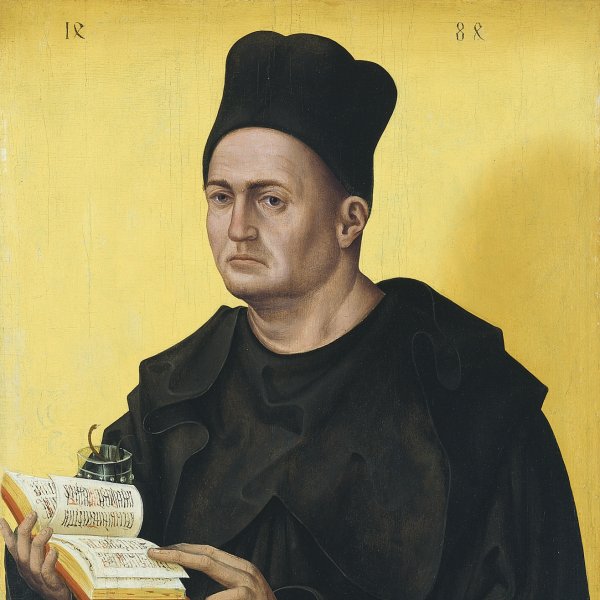Jan Polack
(?), ca. 1450-Munich, 1519
Polack was a German painter of possibly Polish origin who was active in Bavaria. The exact place of his birth is unknown nor is there any surviving information regarding his training but it is known that he worked in Munich, where he became the most important and successful artist of the Munich school from 1482 to his death in 1519. Polack ran a prestigious workshop in Munich with a large number of assistants, which he expanded as a result of the numerous commissions that he received. It has been suggested that Polack arrived in Germany for the marriage in 1475 of Georg “the Rich”, later duke of Bavaria-Landshut, to Hedwig, daughter of King Kasimir IV of Poland.
Polack’s work falls within the tradition of Bavarian painting and reveals the influence of the Master of the Tegernsee Passion. His style is also characterized by a sense of a realism and slightly coarse handling. He is documented as an artist from 1482 onwards, and in 1488 was official painter to the city of Munich.
Among Polack’s earliest works is the series of frescoes in the church of Saint Wolfgang in Pipping (Munich), commissioned by Duke Sigismund in 1479. In 1491 he executed three altarpieces for the palace chapel at Blutenberg, which are among his most celebrated and characteristic works. One year later, Duke Albrecht IV commissioned him to produce some mural paintings (now lost) and an altarpiece with scenes of the Passion (Bayerisches Nationalmuseum, Munich). Notable among his ecclesiastical commissions are the altarpiece for the high altar of the Benedictine abbey at Weihenstephen near Freising, and the panel of the three founders of the Benedictine monastery at Benediktbeurn (now Bayerische Staatsgemäldesammlungen, Munich). Polack was also a notable portraitist.
Polack’s work falls within the tradition of Bavarian painting and reveals the influence of the Master of the Tegernsee Passion. His style is also characterized by a sense of a realism and slightly coarse handling. He is documented as an artist from 1482 onwards, and in 1488 was official painter to the city of Munich.
Among Polack’s earliest works is the series of frescoes in the church of Saint Wolfgang in Pipping (Munich), commissioned by Duke Sigismund in 1479. In 1491 he executed three altarpieces for the palace chapel at Blutenberg, which are among his most celebrated and characteristic works. One year later, Duke Albrecht IV commissioned him to produce some mural paintings (now lost) and an altarpiece with scenes of the Passion (Bayerisches Nationalmuseum, Munich). Notable among his ecclesiastical commissions are the altarpiece for the high altar of the Benedictine abbey at Weihenstephen near Freising, and the panel of the three founders of the Benedictine monastery at Benediktbeurn (now Bayerische Staatsgemäldesammlungen, Munich). Polack was also a notable portraitist.





